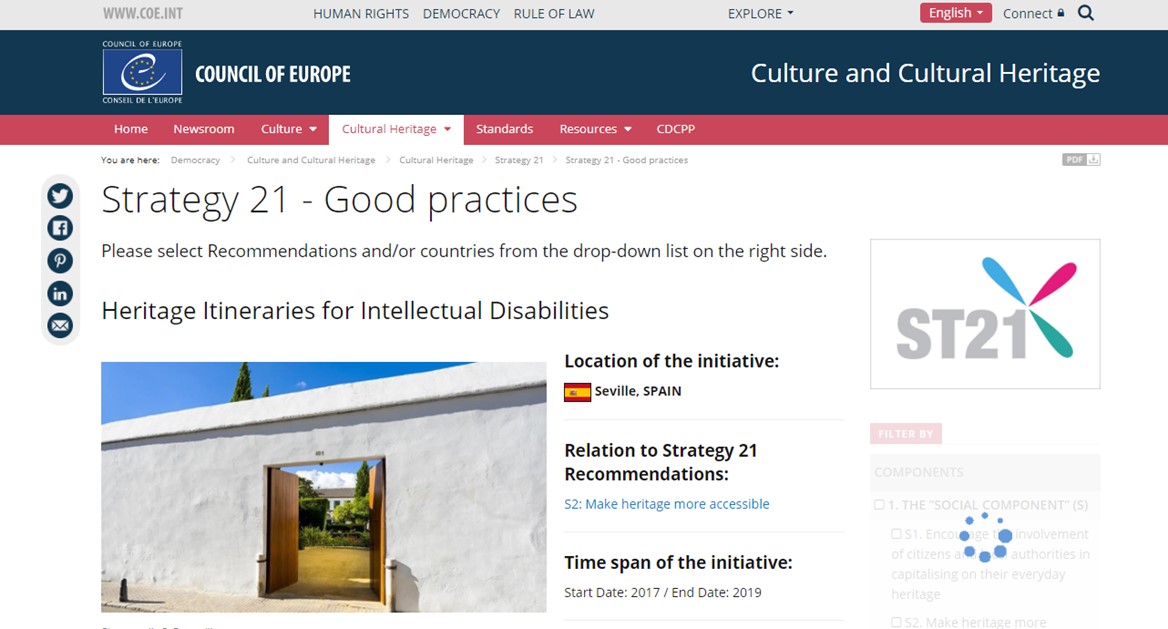Design for All in Cultural Heritage

Website Strategy 21Good Practice, https://www.coe.int/en/web/culture-and-heritage/-/heritage-itineraries-for-intellectual-disabilities
In March 2021, the European Commission took a further step in accessibility and inclusion with the new Strategy for the Rights of Persons with Disabilities 2021-2030.All have a right to equal opportunities, have good conditions in the workplace and to live independently but also to participate fully in the life of their community; a life without barriers. The latter includes the enjoyment of cultural heritage and therefore universal accessibility for people with physical, sensory and cognitive disabilities. This objective was already reflected in the text of the 2006 United Nations Convention on the Rights of Persons with Disabilities, which also highlighted the importance of mainstreaming disability issues as an integral part of relevant strategies of sustainable development. Article 2 of this standard includes the content of the term universal design: the design of products, environments, programmes and services to be usable by all people, to the greatest extent possible, without the need for adaptation or specialised design. Together with this term, it also includes the term reasonable accommodation, which is of great importance in actions on the built heritage. In addition to this term, the term “reasonable accommodation” is also included, which is of great importance in actions on the built heritage.